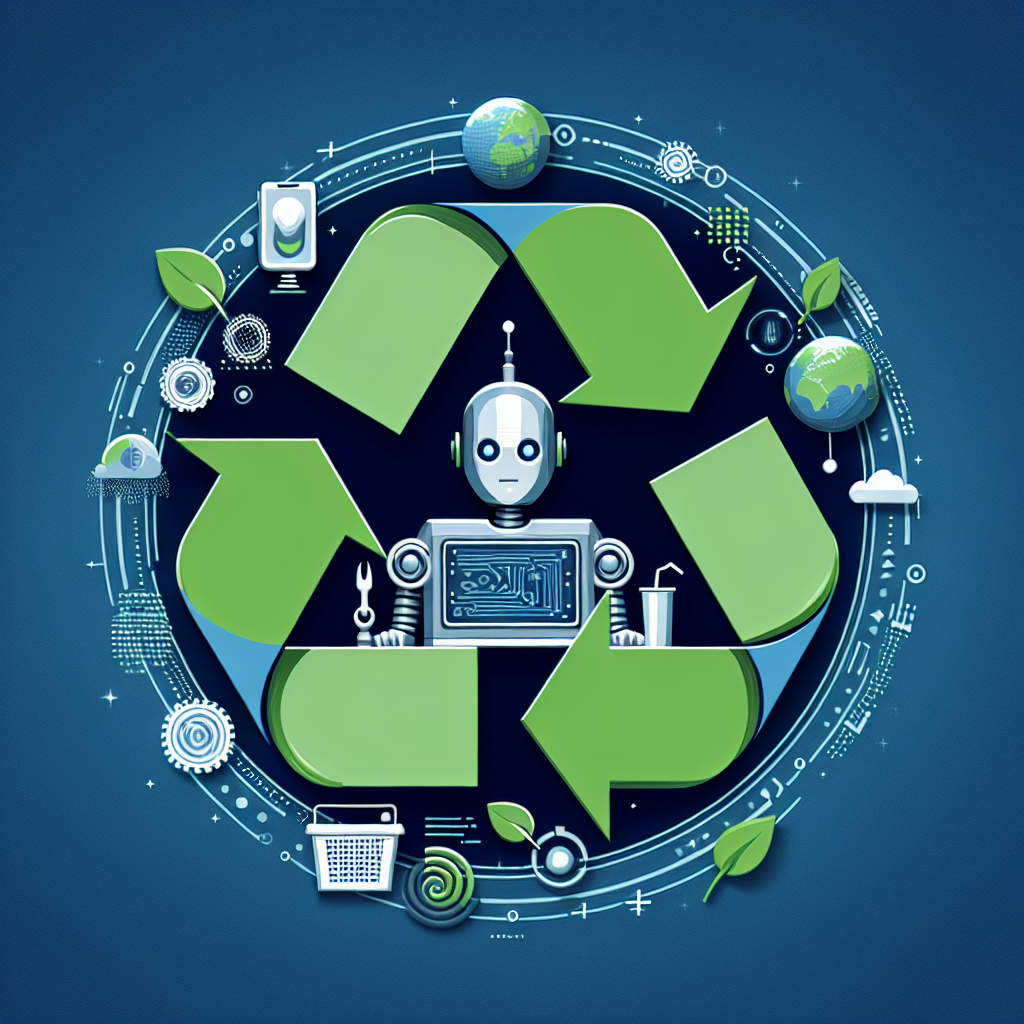AI and Circular Economy: A Match Made in Sustainability
In recent years, there has been a growing emphasis on sustainability and the need to transition towards a more circular economy. A circular economy is an economic system aimed at minimizing waste and making the most of resources. This shift is crucial in order to reduce our environmental impact and ensure the long-term health of our planet. At the same time, artificial intelligence (AI) has emerged as a powerful tool that can help us achieve these sustainability goals. By harnessing the capabilities of AI, we can optimize resource management, improve efficiency, and drive innovation in the circular economy.
AI and circular economy: a perfect match
AI is revolutionizing the way we approach sustainability and resource management. Its ability to analyze vast amounts of data, identify patterns, and make predictions allows us to optimize processes and make informed decisions. In the context of the circular economy, AI can play a key role in several areas:
1. Resource optimization: AI can help us better manage resources by analyzing data on consumption, production, and waste generation. By identifying inefficiencies and opportunities for improvement, AI can help us minimize waste and maximize the use of resources.
2. Supply chain management: AI can optimize supply chains by predicting demand, identifying potential bottlenecks, and streamlining processes. By improving the efficiency of supply chains, we can reduce waste and environmental impact.
3. Product design: AI can help us design products that are more sustainable and easier to recycle. By analyzing data on materials and processes, AI can suggest alternative materials, designs, and production methods that are more environmentally friendly.
4. Waste management: AI can improve waste sorting and recycling processes by identifying materials, sorting them automatically, and optimizing recycling routes. By making waste management more efficient, AI can help us reduce the amount of waste that ends up in landfills.
5. Energy efficiency: AI can optimize energy consumption by analyzing data on energy usage, identifying opportunities for savings, and adjusting energy usage in real-time. By optimizing energy efficiency, we can reduce our carbon footprint and lower our energy costs.
Overall, AI has the potential to revolutionize the circular economy and drive sustainable practices across industries. By leveraging the power of AI, we can create a more efficient, resourceful, and sustainable economy that benefits both the planet and society.
FAQs:
Q: How can AI help companies transition to a circular economy?
A: AI can help companies transition to a circular economy by optimizing resource management, improving supply chain efficiency, designing more sustainable products, enhancing waste management processes, and increasing energy efficiency.
Q: What are some examples of AI applications in the circular economy?
A: Some examples of AI applications in the circular economy include predictive maintenance for machinery, demand forecasting for supply chains, material optimization for product design, waste sorting and recycling automation, and energy consumption optimization.
Q: What are the benefits of AI in the circular economy?
A: The benefits of AI in the circular economy include reduced waste generation, optimized resource use, improved efficiency, lower environmental impact, cost savings, and increased innovation.
Q: How can companies integrate AI into their circular economy strategies?
A: Companies can integrate AI into their circular economy strategies by investing in AI technologies, collecting and analyzing data on resource use and waste generation, collaborating with AI experts and researchers, and implementing AI solutions in their operations.
Q: What are the challenges of implementing AI in the circular economy?
A: Some challenges of implementing AI in the circular economy include data privacy concerns, upfront costs, technical complexity, workforce training, and regulatory barriers. However, these challenges can be overcome with proper planning, investment, and collaboration.
In conclusion, AI and the circular economy are a perfect match when it comes to sustainability. By leveraging the power of AI, we can optimize resource management, improve efficiency, and drive innovation in the circular economy. With the right strategies and investments, AI can help us create a more sustainable and resilient economy that benefits both the planet and society.

